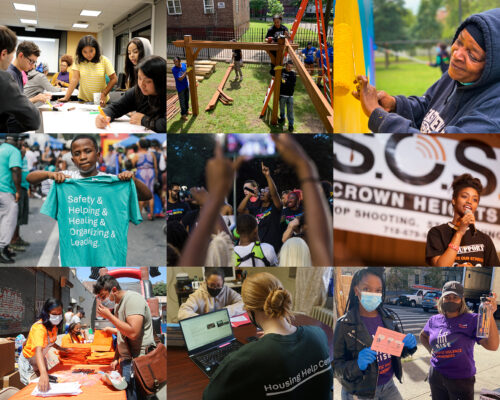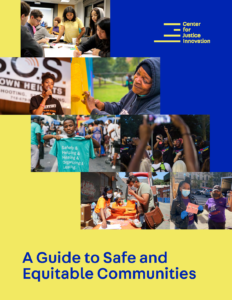With crime, violence, and other indicators of social upheaval on the rise in the wake of the COVID-19 pandemic, many communities are struggling with how to best respond. On the one hand, residents in neighborhoods hard-hit by crime are looking for assurances of safety, with the conventional and immediate response being an increase in policing. At the same time, these same neighborhoods often hold a deep distrust of law enforcement and other systems that have traditionally been deemed responsible for safety—a distrust caused by the real harms that over policing, arrest, and incarceration have caused. This all begs the question: if people are wary of traditional criminal justice strategies, how do we best keep communities safe—not just stopping individual crimes, but producing sustainable, lasting conditions of safety?
The Center for Justice Innovation’s Guide to Safe and Equitable Communities shares the principles and practices that we believe underlie the creation of a long-term, resident-led approach to community safety. This approach focuses on community-led, collaborative solutions that build on developing the prerequisites to neighborhood safety—such as education, economic mobility, quality housing, mental health supports, safe public spaces, and opportunities to improved trust both between residents and local systems and among neighbors.
As of January 2023, the Center for Court Innovation has changed its name to the Center for Justice Innovation. Though originally published under our previous name, the name and logo in this document has been updated to reflect the new name.



